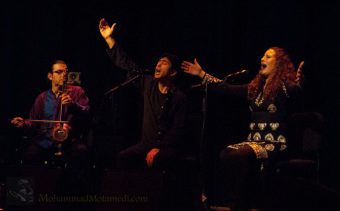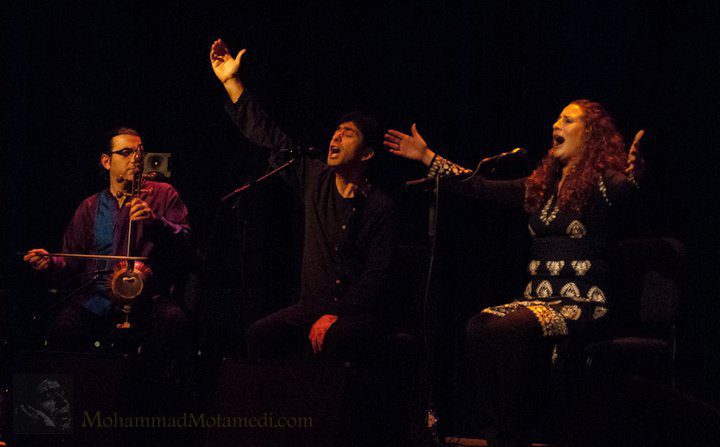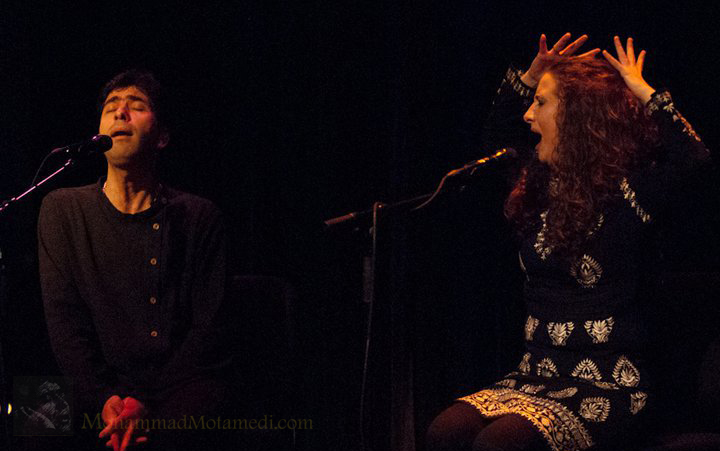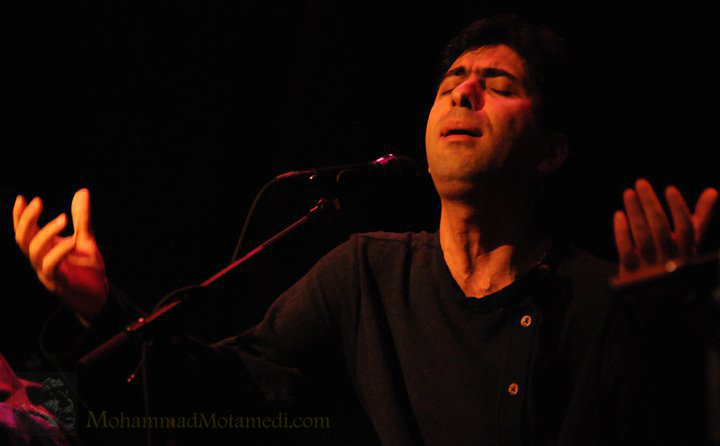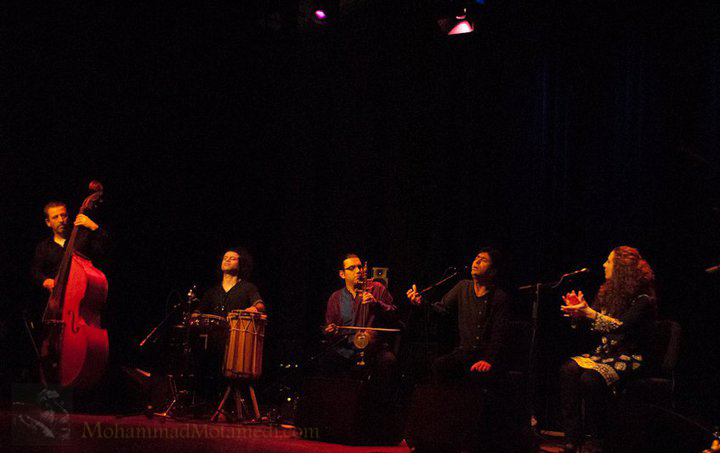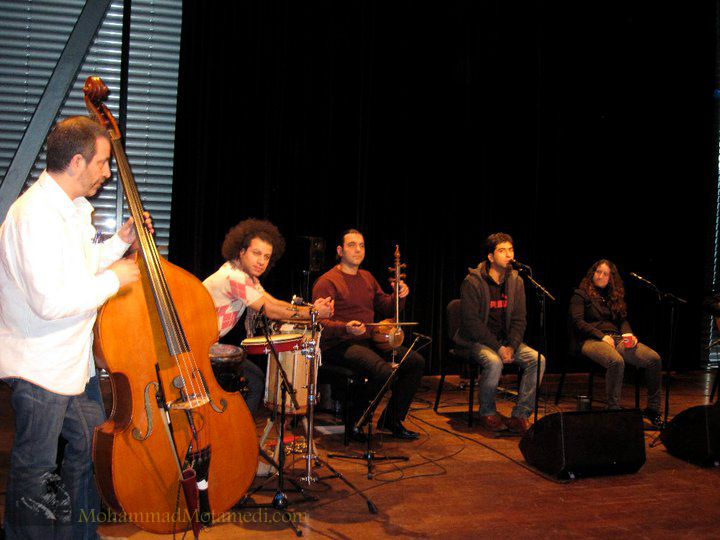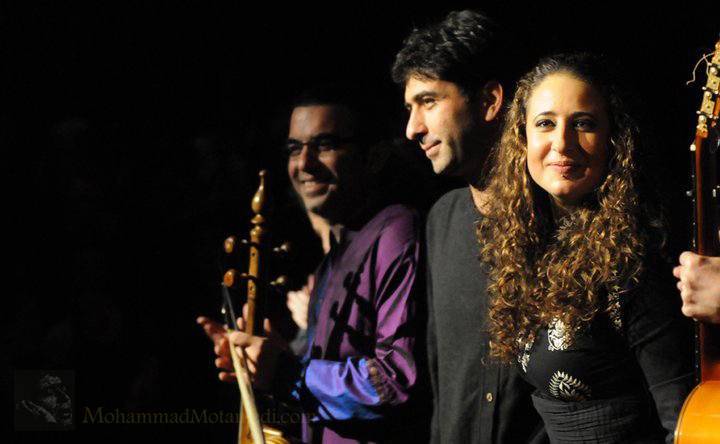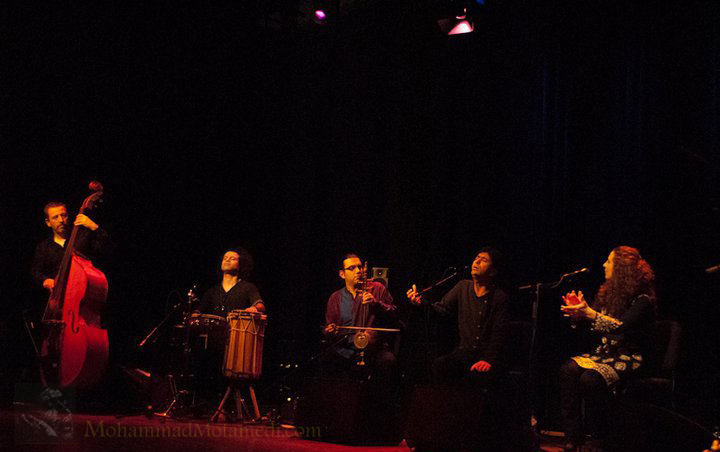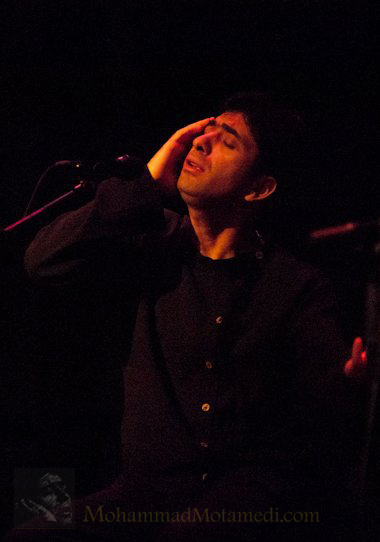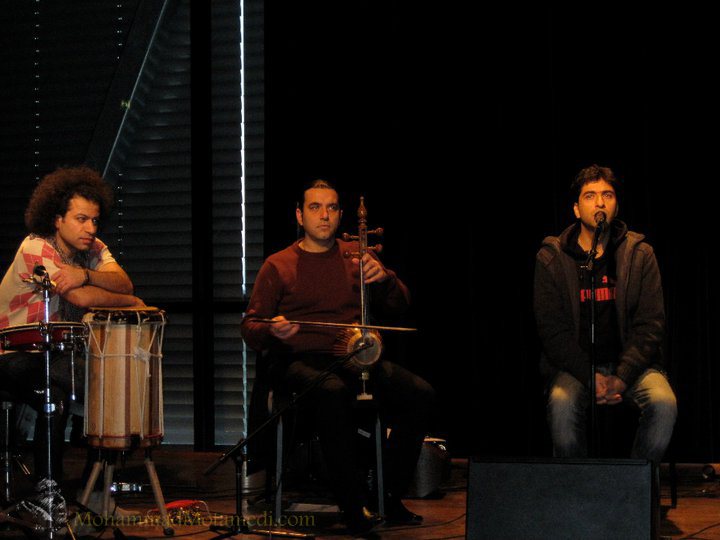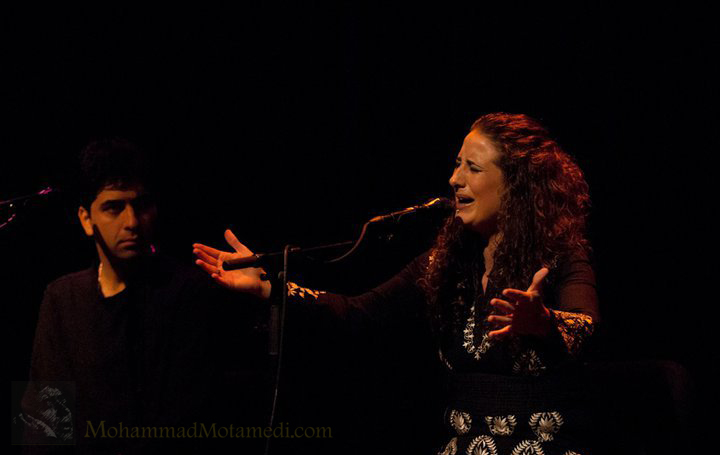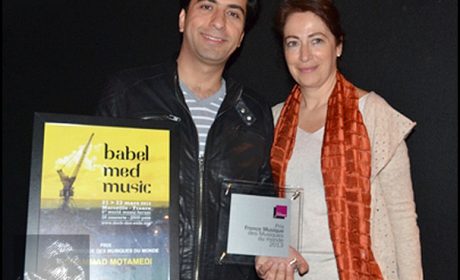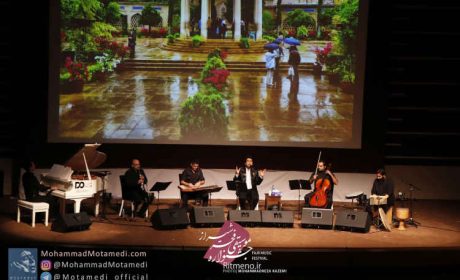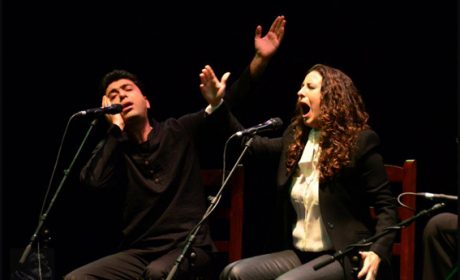DUTCH FLAMENCO BIENNIAL 2011 ROSARIO LA TREMENDITA & MOHAMMAD MOTAMEDI, 'QASIDA'
Timeless
Silvia Calado. Amsterdam, January 28th, 2011
'Qasida'. Rosario la Tremendita, Mohammad Motamedi: vocals. Salvador Gutiérrez: guitar. Sina Jahanabadi: kemanche. Hadi Azarpira: tar. Hossein Rezaee Nia: daf. Jordi Gaspar: contrabass. Luis Amador: percussion. Bobote, Oruco: clapping. 3rd Dutch Flamenco Biennial. Melkweg Rabozaal. Amsterdam (Holland), January 27th, 2011, 9 p.m.
One characteristic which defines the Dutch Flamenco Biennial is that it generates encounters. Whereas in the previous edition, guitarist Niño Josele dialogued with Berber singer Charifa Kersit, in this one the festival’s artistic management, besides counting on contemporary and jazz, has mediated between cantaoraRosario la Tremendita and Persian singer Mohammad Motamedi. And after getting to know one another for a few days, side by side at the Bimhuis they premiered a concert called 'Qasida', which will also be presented at Festival de Jerez 2011.
What usually happens with these kinds of initiatives - which attempt, with greater or lesser luck, to demonstrate empirically that the roots of the jondo art lie in the East - is that both parts don’t know each other well enough to tackle a deep dialogue and the common lexicon is usually too limited for the conversation to flow naturally. And it all ends up boiling down to momentary convergences, arising from the search for common rhythmic structures.
Indeed, that resource is worked on extensively in 'Qasida', with encounters to the beat of fandangos, tientos and tangos, seguiriyas and even bulerías (seen from our flamenco perspective). But if this project goes beyond those structural contacts, it’s because of the search for a common emotional tone based on vocals. Something which is possible due to the compatibility between the two singers, comparisons aside. Rosario la Tremendita has that way of uttering flamenco cante which is sugary and lyrical, malleable and perfectionist, over-elaborate in the forms and musically intuitive. Mohammad Motamedi, coming from a much older and studied tradition, applies training and sophistication to singing, with exquisite techniques that are known to be age-old, historical.
Their communion was achieved more in the first part than in the second. And it was so due to climatic, emotional, temporary reasons... or rather, timeless ones. An encounter which materialized with full-fledged intensity in the lullaby, a free space to sketch out the cantes slowly, with space and with emotion. Not in time, but timeless. Then they would coincide at given moments, through instrumental connections (percussion, guitar, kemanche, contrabass), through rhythms and, finally, according to the magic number three which joins us all, through fandangos. The ‘ayeos’ grew at the end, were superimposed, were multiplied sentimentally and, for an instant, it seemed like everything fit together... until the cantaora made the cocky flamenco move of getting up, leaving the finish halfway and, in passing, leaving her Persian colleague alone and the audience perplexed. Sharing has to be much more than singing, much more than being flamenco.
http://www.flamenco-world.com/magazine/about/biennale2011/biennale29012011.htm
